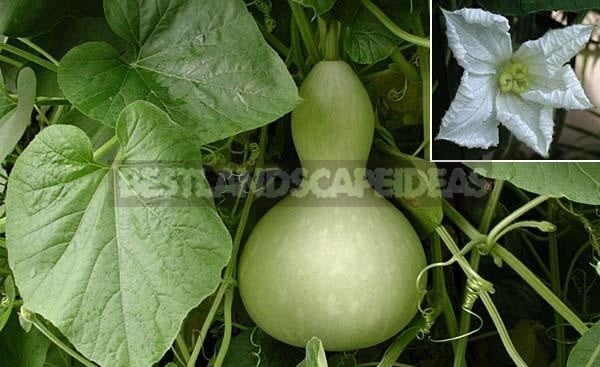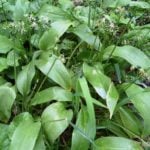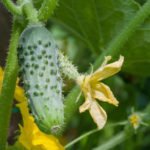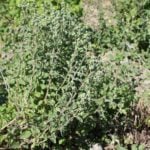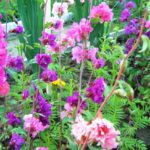Lagenaria is a herbaceous vine with a creeping stem up to 15 m (16.4 yard) tall. The faceted stem is covered with a soft felt trunk. The leaves are large, pentagonal, heart-shaped or kidney-shaped, whole or 3-5-lobed. The flowers are bisexual (male and female), solitary, 6-7 cm (2.3-2.7 inches) in diameter, white or white-cream, located in the leaf axils. The flowers bloom at night from July to August.
At the beginning of flowering, lagenaria, like most pumpkins, gives voids, later ovaries appear. Fruits-pumpkins of various shapes: serpentine, spherical, pitcher. When young, they are usually white-green to black-green in color and densely covered with white down; mature bark is woody, white to green with a white or marble pattern.

It is believed that the birthplace of lagenaria is India, Ethiopia. This exotic vine is able to create a dense drape of large, beautiful leaves. It is decorative throughout its life, but it is especially attractive when covered with white flowers, and then-when it impresses with the gigantic size and bizarre shapes of the fruits.
In the garden, the lagenaria supports white scales. It is better to plant in warm, wind-protected areas with light, fertile, non-acidic soil; it does not tolerate waterlogging. The fit pattern is 80 x 80 (2.6×2.6 feet) or 100 x 100 cm (3.3×3.3 feet). The best precursors for lagenaria: beans, onions, cabbage.
Lagenaria is not only an ornamental, but also a vegetable, medicinal, plant. Young fruits have an anthelmintic effect, are used for the treatment of diseases of the gastrointestinal tract, skin rashes, for the prevention of cardiovascular diseases, for stomach catarrh, for oncology. They can be used to prepare salads, sauces, caviar. From mature fruits, pitchers, small vases are made and used in the design of dry bouquets and winter decorative compositions.
